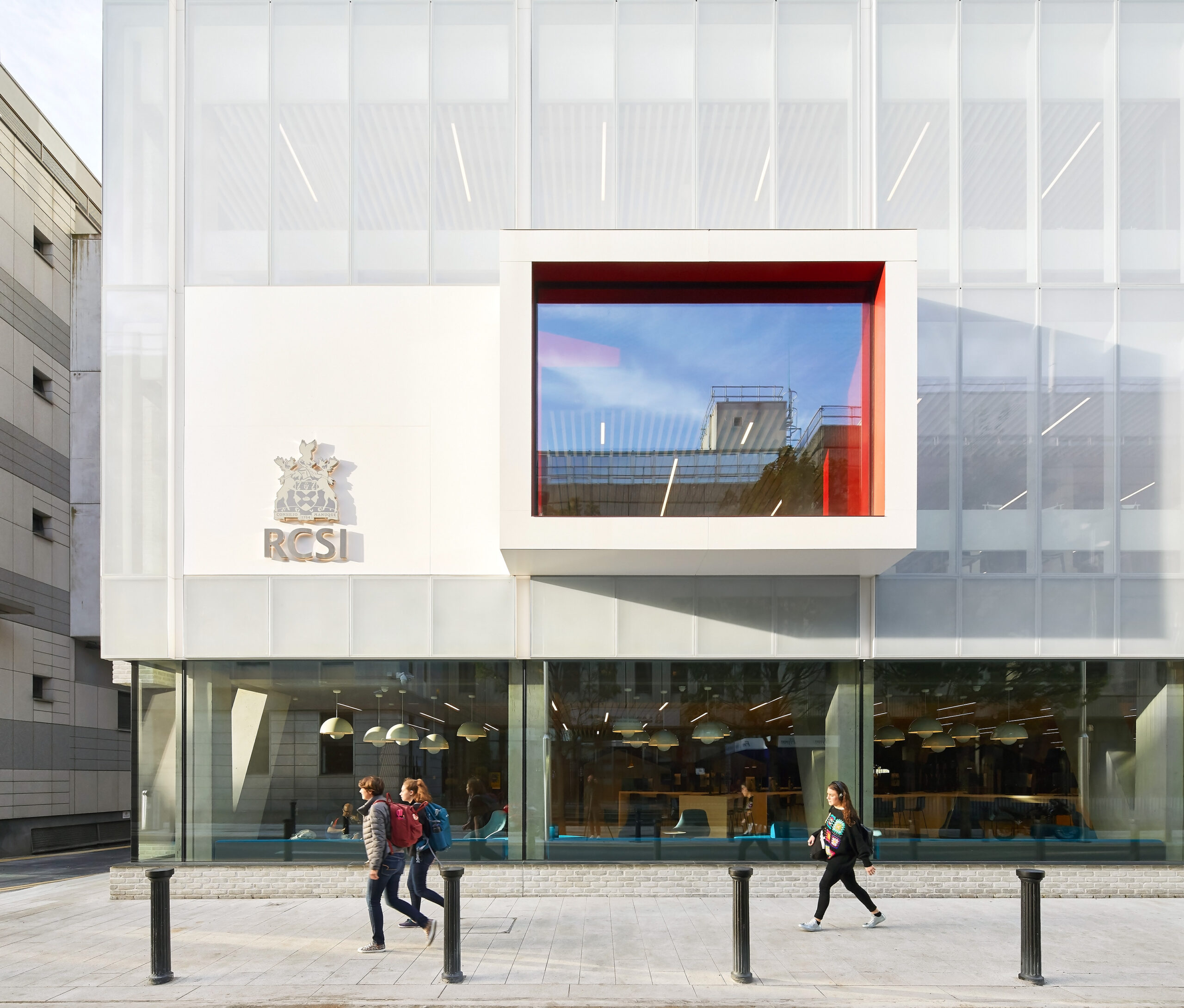A key reputational challenge for universities during the pandemic has been to move learning and other services online swiftly and effectively. Justin Ralph, CIO at World 100 Member, RCSI in Dublin, shares his experience of the “remote” IT transformation journey:
 The COVID-19 pandemic is a human tragedy, a tragedy that we will all be battling for the foreseeable future. But back at the end of 2019, when news of the virus began filtering in from China, few of us will have appreciated just how profoundly it would affect us all.
The COVID-19 pandemic is a human tragedy, a tragedy that we will all be battling for the foreseeable future. But back at the end of 2019, when news of the virus began filtering in from China, few of us will have appreciated just how profoundly it would affect us all.
As a University of Medicine and Health Sciences, RCSI is fortunate to have some of the world’s leading experts working in the area of infectious diseases. And so it was, in early February 2020 that an internal briefing from Dr. Sam McConkey, Deputy Dean, International Health & Tropical Medicine at RCSI, to our Senior Management Team was the “canary in the mine” that prompted swift action across the institution.
Our Business Continuity Team was assembled and began to meet daily to review our contingency plans in the event of closure – with IT provision for both staff and students, firmly in the spotlight.
Questions such as “How can we ensure the safety of our students and staff”, “How can we assist our front line clinicians?”, “Can we continue to operate as a “virtual university” in the event of major disruption?”, “How will technology facilitate the transition from this physical environment to the virtual?, “How can we continue our invaluable research?”. Questions that every university in the world will have been asking; but for a university that is wholly focused on training healthcare students and supporting the professional development of surgeons across Ireland, it presented a unique set of challenges.
Our underlying principle was to ensure we did not progress any students without the opportunity for our teaching staff to ensure they had adequate exposure to clinical experience and assessment. An added imperative was to devise innovative solutions that would enable over 300 Final Year medical students to take their final exams via an online-invigilated environment so they could qualify as doctors and enter into medical facilities across the world to contribute to the fight against COVID-19. 
In addition to our Business Continuity Team, a parallel working group was established within the IT and Transformation department to review how the University would answer all these question from a technology perspective, while guided by this underlying principle. A few key decisions were agreed early:
- We would utilize existing technology.
- Undertake intensive training and support for our lecturers in the use of this technology.
- Provide a simple consolidated training and implementation plan for all staff in the university.
- Engage, train, and utilize “I.T. Super Users” across the university.
- Follow a 4-week implementation plan.
1. Utilization of existing technology:
As is common in most universities, RCSI already operated a number of software solutions, but these were to be found in ‘pockets’ across the institution and not used consistently. The decision was made to roll these out on a global scale and employ the best solution for the right audience and purpose. This is what we used, in combination:
- Live lectures and Student Tutorials
- Small Class Tutorials, Smaller Student Lectures, Online Medical Long Case exams
- Online student assessment
- Automated invigilated tool for online assessment
- Staff collaboration and team meetings
- Weekly Clinical Webinars for the Medical community including surgeons, consultants, GPs and nurses
- Platforms to host internal resources for staff e.g. IT training material
- Remote access to Files, Collaboration, Storage
- Remote access for staff and researchers to allow continued access to their research and work-related files as well as remote access to RCSI applications and to critical research workstations
- Users with RCSI Laptops were allowed to connect to the RCSI network directly to access resources
It’s a long list but the point is that this combination of resources is working for us and the feedback from staff and students is good.
2. Intensive training for our end-users in the use of this technology.
From the middle of February, a series of onsite and online training sessions were arranged across our campus locations. This training focused on how to deliver engaging lectures, how to record a narrated lecture using PowerPoint, and how to utilize technologies for Student forums, Small Class Tutorials, and Small Student Lectures. The attendees were also versed in the inner workings of best practice remote learning. In total 210 members of teaching staff were trained over an intensive period of 21 days.
3. Simple Consolidated Training Plan
A series of short, succinct training videos were created by the IT team, together with a simple set of instructions and published on a new IT training site within our staff portal.
With the help of the HR and Estates team, acting as our ‘critical friends’, the training material was written in non “I.T. Language”. These training guides are updated regularly and supported by live online sessions. The result has been wholesale adoption of the various solutions right across the University.
4. Training of Super Users
Transforming a physical university into a virtual university overnight required all our staff to embrace the transformation. Given the size of the university, with only a limited central IT resource, and the fact that we did not have time for a Change Management supporting strategy, a call was put out seeking a number “I.T. Super Users” in all departments and schools.
This “I.T. Super User” could come from any function but needed to be sufficiently proficient in technology and transformation to be the designated point of contact for any “I.T.” related queries inside of that department or school. This role is usually covered by the I.T. Help Desk but given the size of the transformation ask and the time that was available to undertake the training, we had to corral extra resource, and quickly!
We were delighted with the response. In all, we now have 63 “I.T. Super Users, and this small army of volunteers now provides a vital link from their school or department into a designated IT liaison in the central IT department. A number of training sessions were held in the first two weeks with the “Super Users” to provide them with more in-depth knowledge of online co-working platforms and remote working. This devolved approach gave us confidence that every department and school at our Dublin site and including our campuses in Bahrain, and Dubai, was equipped with the tools and skills they needed to move from the “Physical to the Virtual” when our campuses closed on 13th March.
4. 4-week implementation plan
And finally; it was important to review and refine our approach, based on user experience of both staff and students. So, a 4-week implementation was created, followed, adjusted, and is updated on a regular basis and reviewed by our Senior Management Team.
RCSI is still on the “remote” transformation journey. As good as it has been, it is still no replacement for physical lectures, live tutorials, and physical presence. Students come to university for both the experience of learning and the experience of living. In the new world, there will have to be room for both. If undertaken correctly, the “physical” could be complemented by the more engaging elements of the “virtual”. This will become the new normal for the foreseeable future. All future ways of working will incorporate this new hybrid model. But the journey we have taken in the short time to this point gives me confidence that we can take the best of our learning forward when we come out of this dreadful crisis.
Justin Ralph, Group Chief Information Officer, RCSI – University of Medicine and Health Sciences

